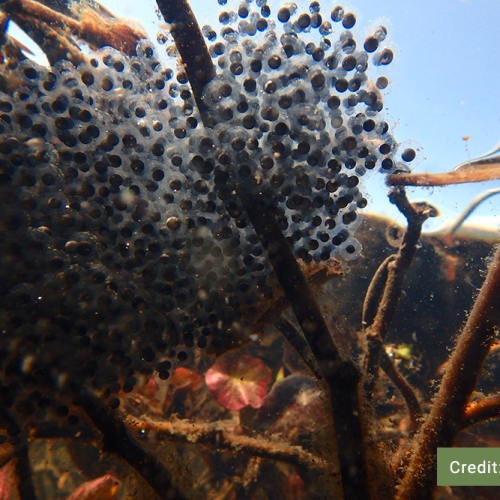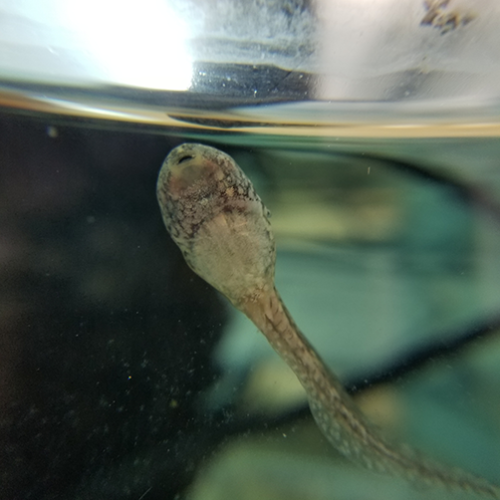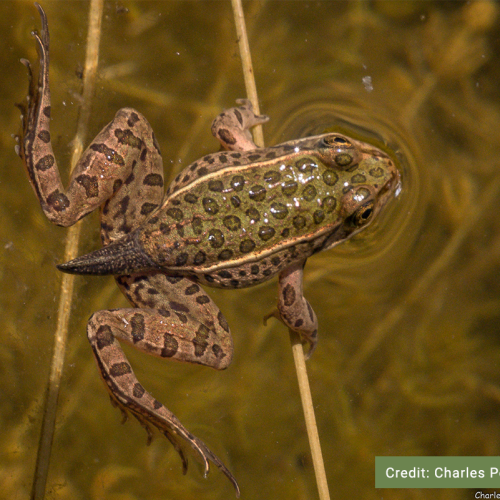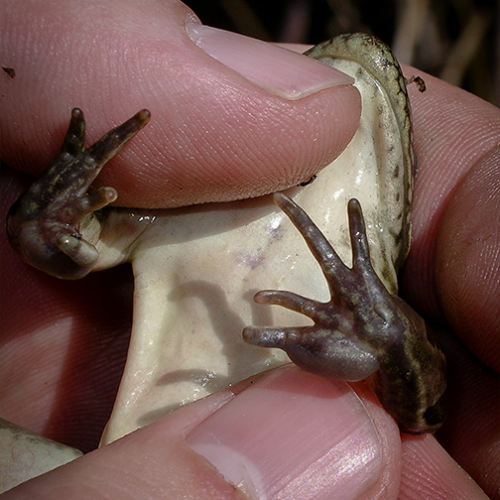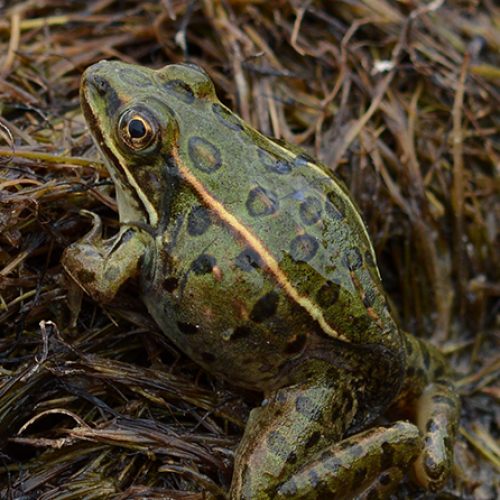Credit: Patrick Randall
Northern Leopard Frog
Lithobates pipiens
Description
Other names: Rana pipiens
The Northern Leopard Frog is a medium-large frog that can reach 13-15 cm in body length, although adults are more commonly 5-8 cm. They are typically green or brown with dark oval spots with light edges or “halos” over their back and the tops of their legs. It has light-coloured dorsolateral foldsDefinition:Visible raised ridges of skin that run down part of all of the length of the back, usually on the sides. extending from the head to the groin. The upper lip has a white stripe that extends to the shoulder. The belly is white and may have a creamy-yellow tinge. Northern Leopard Frog tadpoles have long tails and a large tail fin. Tadpoles range from light brown to green with small gold spots and bronze bellies. Tadpoles typically metamorphose around 9 cm in length but may reach up to 12 cm.
Listen to the Indigenous words for “frog” here!
Northern Leopard Frog Call
The call of the Northern Leopard Frog is a low snore followed by several low grunts that does not travel very far. It has been described as a “chuckling” or “gabbling” sound, or like a finger rubbed on a wet balloon.

Northern Leopard Frog Call
The call of the Northern Leopard Frog is a low snore followed by several low grunts that does not travel very far. It has been described as a “chuckling” or “gabbling” sound, or like a finger rubbed on a wet balloon.
Similar Species
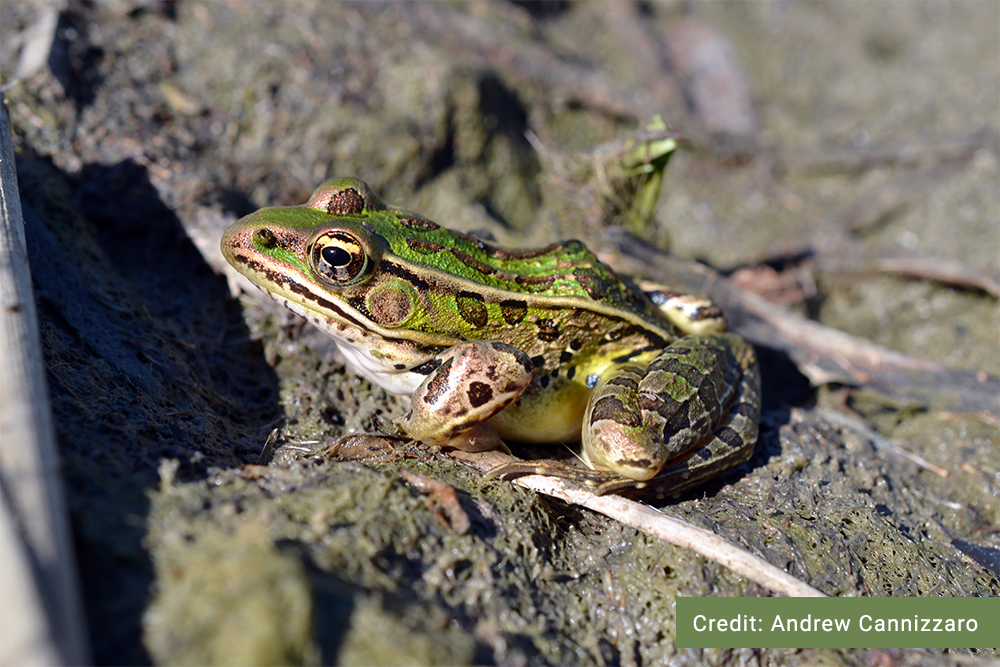
Distribution
Habitat
Reproduction
Breeding occurs from mid-March to early June. Males will call to attract females. Fertilization occurs externally as the male grasps the female in amplexusDefinition:The mating position of frogs and toads in which the male clasps the female about the back.. The female will lay globular egg masses 6-9 cm in diameter of up to 7,000 eggs. The egg masses are typically attached to aquatic vegetation near the surface and within a few meters of shore. Eggs are black on top and white underneath. Hatching time depends on water temperature, but occurs after 1-3 weeks. Tadpoles metamorphose 2-3 months later. Leopard Frogs do not reach sexual maturity until 2-3 years old, and likely do not live past the age of 5.
Diet
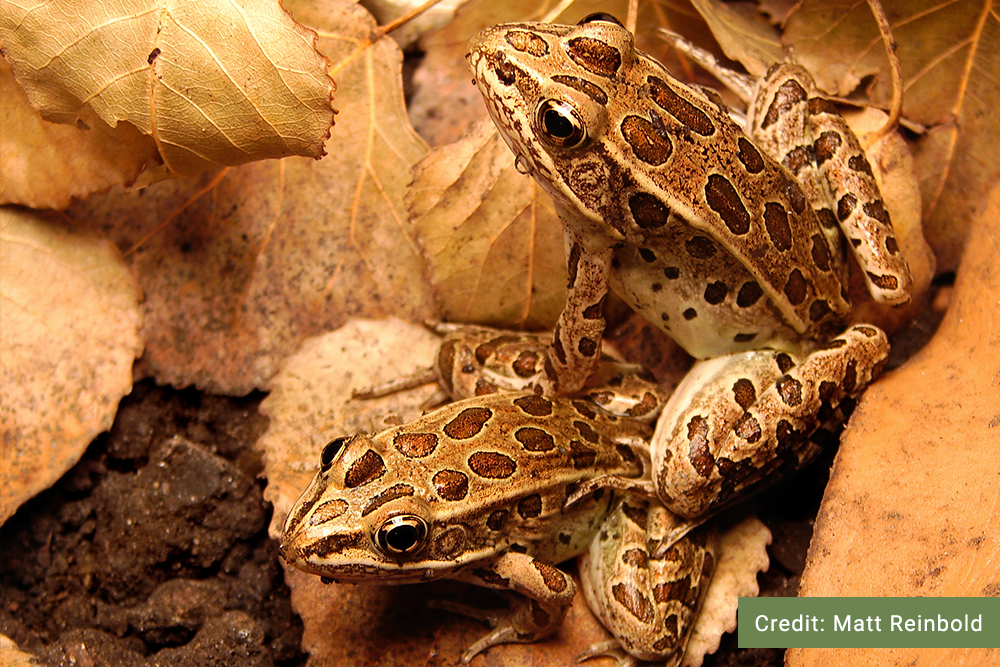
Conservation Status
Global: G5 (2016)
COSEWIC: E
SARA:1-E (2003)
Provincial: S1 (2016)
BC List: Red
Learn more about conservation status rankings here
Threats
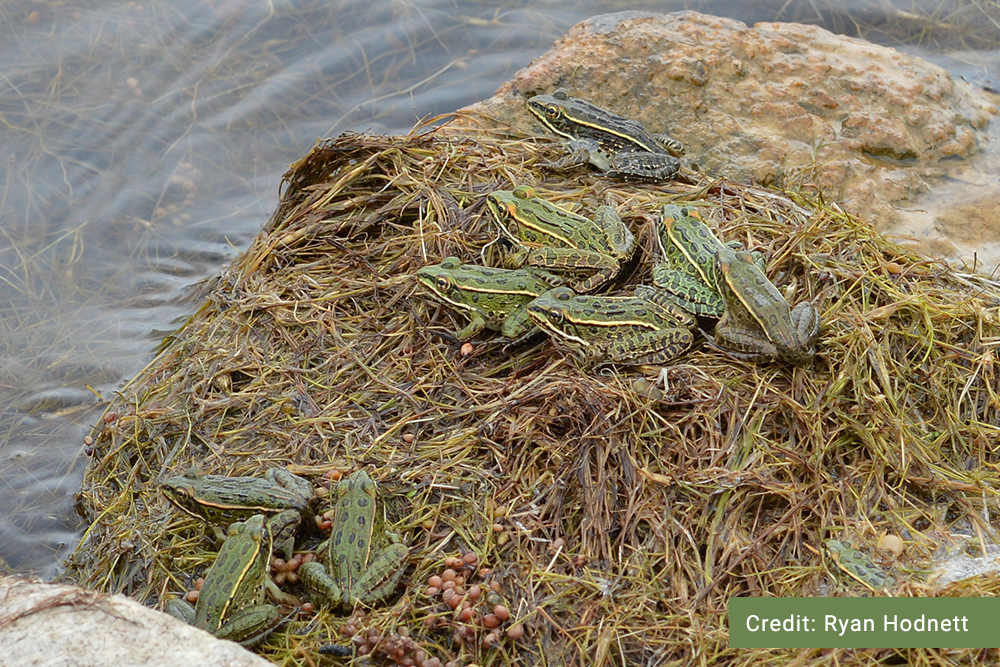
Did You Know?
The colour of Northern Leopard Frogs (brown or green) is determined by a single gene with two alleles, with Brown being dominant to Green.
However, green is the most common colour of Northern Leopard Frogs in Canada, and the only colour recently reported in British Columbia.
Species Account Author: Marcus Atkins
Pathways to Recovery Conference Organizing Committee, Victoria, BC. 14pp.
B.C. Conservation Data Centre. 2021. BC Species and Ecosystems Explorer. B.C. Minist. of Environ. Victoria, B.C. Available:https://a100.gov.bc.ca/pub/eswp/ (accessed May 24, 2021).
B.C. Conservation Data Centre. 2010. Species Summary: Lithobates pipiens. B.C. Minist. of Environment. Available:https://a100.gov.bc.ca/pub/eswp/ (accessed May 24, 2021).
B.C. Conservation Data Centre. 2021. BC Species and Ecosystems Explorer. B.C. Minist. of Environ. Victoria, B.C.
Available:https://a100.gov.bc.ca/pub/eswp/ (accessed May 24, 2021).
COSEWIC 2000. COSEWIC assessment and update status report on the northern leopard frog Rana pipiens (Southern Mountain and Prairie populations) in Canada. Committee on the Status of Endangered Wildlife in Canada. Ottawa. vi + 40 pp.
Environment and Climate Change Canada. 2017v. Recovery Strategy for the Northern Leopard Frog (Lithobates pipiens), Rocky Mountain population in Canada. Species at Risk Act Recovery Strategy Series. Environment and Climate Change Canada, Ottawa. 2 parts, 24 pp. + 47 pp.
Matsuda, Brent, David M. Green, and Patrick T. Gregory. 2006. Amphibians and Reptiles of British Columbia. Handbook. Royal BC Museum, Victoria.
Voordouw, M.J., Adama, D., Houston, B., Govindarajulu, P. and Robinson, J. 2010. Prevalence of the pathogenic chytrid fungus, Batrachochytrium dendrobatidis, in an endangered population of northern leopard frogs, Rana pipiens. BMC Ecology. 10(6) 1:10.
http://www.canadianherpetology.ca/species/species_page.html?cname=Northern%20Leopard%20Frog
http://linnet.geog.ubc.ca/efauna/Atlas/Atlas.aspx?sciname=Lithobates%20pipiens
http://a100.gov.bc.ca/pub/eirs/viewDocumentDetail.do?fromStatic=true&repository=BDP&documentId=3379
https://www.naturewatch.ca/frogwatch/leopard-frog-3/



